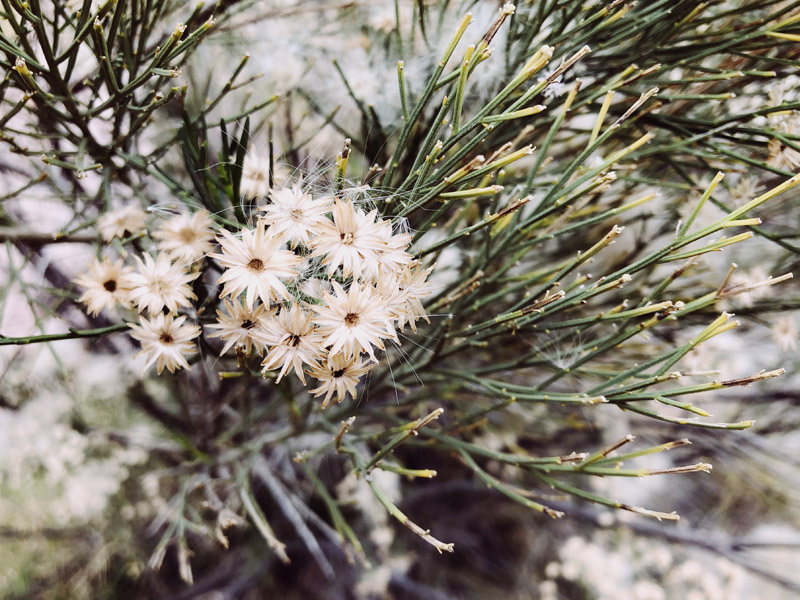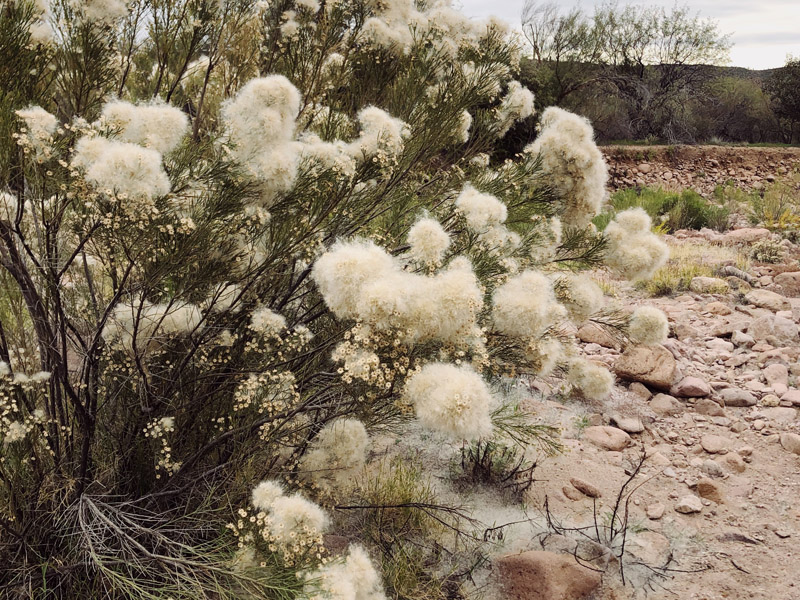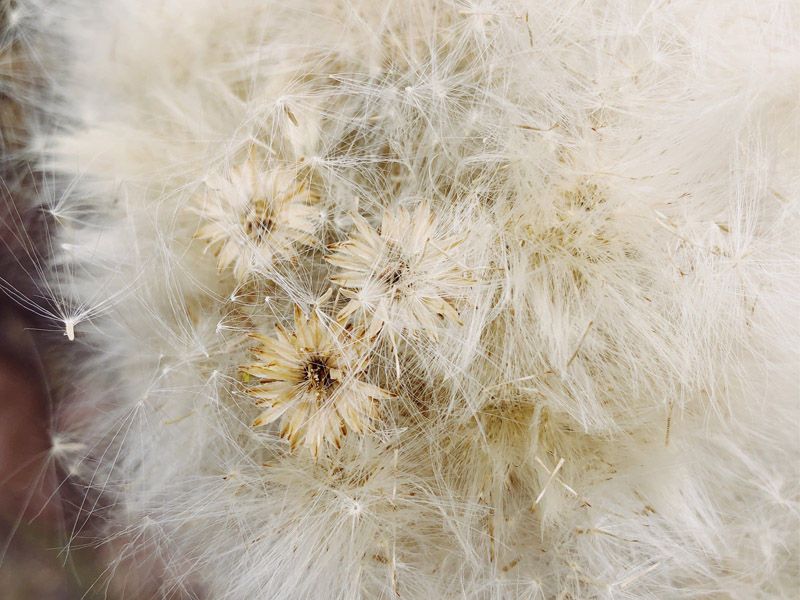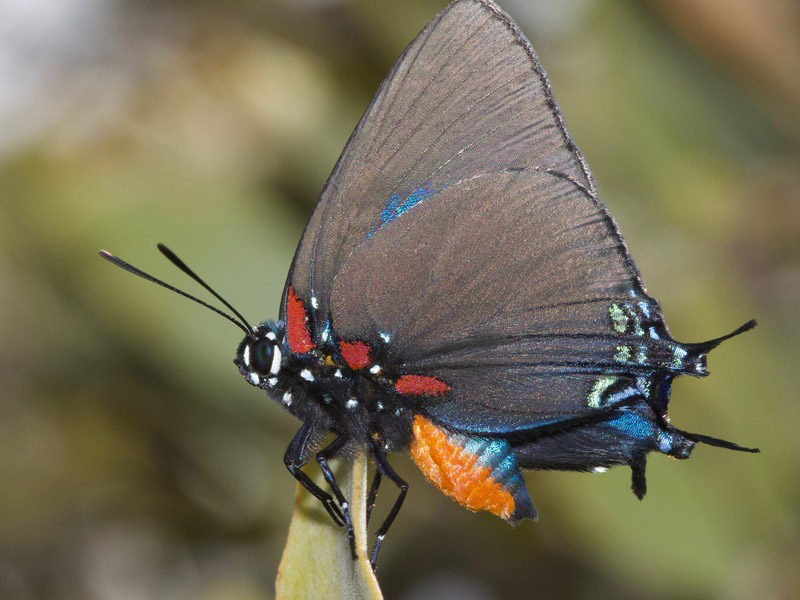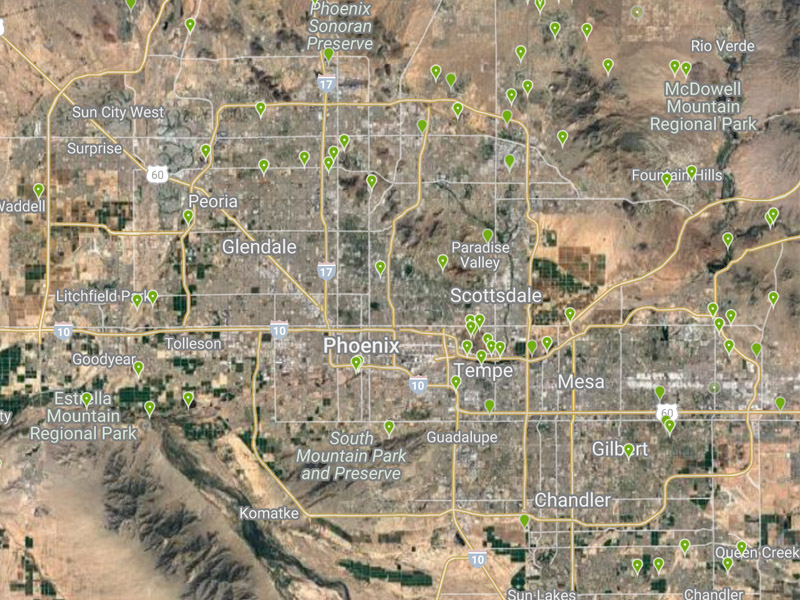This EcoQuest is focused on desert broom (Baccharis sarothroides). Find and map as many desert broom as possible. As a bonus, see if you can also find great purple hairstreak butterflies (Atlides halesus).
It’s that time of year, when desert broom starts to bloom, followed by the fuzzy fluff of seeds in the air. Often met with contempt and considered invasive, desert broom is a native plant with a variety of benefits.
Desert broom often attracts attention for its abundance of fluffy seeds that float through the air around this time of year and coat the ground like a dusting of snow. The masses of floating fluff are often blamed for allergy problems, but the seeds do not actually carry pollen. There is also debate if desert broom pollen triggers allergies at all. Some sources state the pollen is “sticky” and relies on pollinators to transfer pollen. Others say the plant relies on wind pollination, with airborne pollen. This airborne pollen could trigger allergies while the plants are blooming, before the onset of seed fluff.
This plant is also known for its ability to multiply efficiently, thanks to the multitude of those floating seeds and is often labeled a “weed” or invasive. It is these characteristics that also make it beneficial. Desert broom is a pioneer plant, meaning it is one of the first plants to move in after a disturbance to the land. It can help stabilize soil, control erosion and help other plants get started. When established, their deep taproot helps break up hard soils and brings nutrients closer to the surface. It is extremely tolerant to heat, drought and poor soil. This plant can also be a great privacy hedge and wind screen.
Desert broom is a very important plant for pollinators, wildlife and people. The blooming time provides many pollinators with a much-needed nectar source in the fall, to survive into the next season or for migration fuel. A notable nectar seeker is the great purple hairstreak butterfly, which there are very few observations of in metro Phoenix. This plant attracts so many different species of insects that entomologists are said to look to desert broom to find what insects may be in the area. It isn’t just entomologists that are attracted to these insects, but birds and predatory insects like praying mantis as well. Birds and small mammals have also been reported to use this plant for nesting materials and eat the seeds. Many Indigenous peoples of the Southwest use desert broom for making infusions, teas, arrows and brooms.
To get the best of this plant without the seed fluff and unwanted volunteers (plants that grow on their own), you can plant male plants. The female plants produce the masses of airborne seeds. To control what plants may pop up in unwanted areas, pull plants (roots and all) while young before the taproot develops.
Fun Fact: The specific epithet, “sarothoides,” means broom-like, referring to the branching structure that resembles a broom.
Desert broom is a beneficial plant for both people and wildlife. Data for these plants is lacking in metro Phoenix, especially in dense urban areas.
Observing and mapping desert broom in metro Phoenix can provide information about occurrences, population size and density. This observation data can help explore possible wildlife and pollinator corridors. Bonus if you can find great purple hairstreak butterflies.
Join in the project by signing up for the EcoFlora project.
